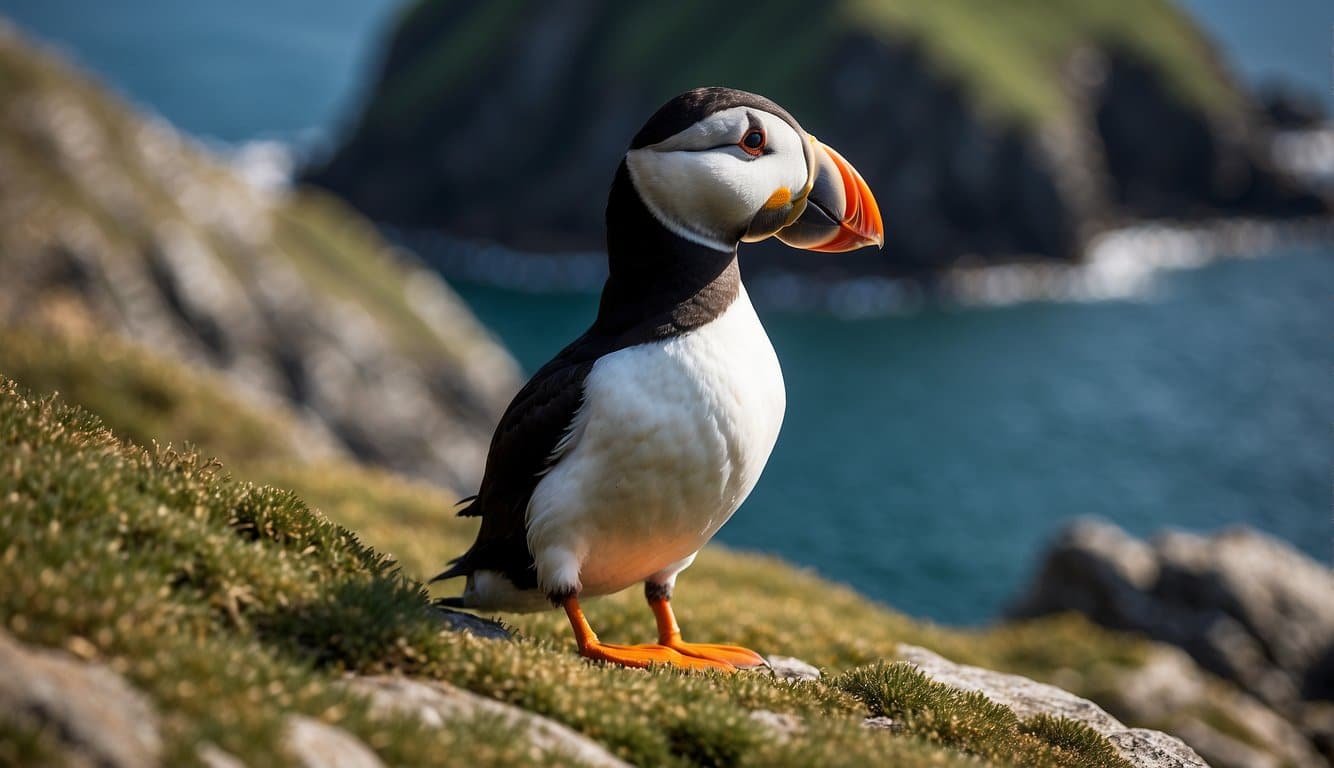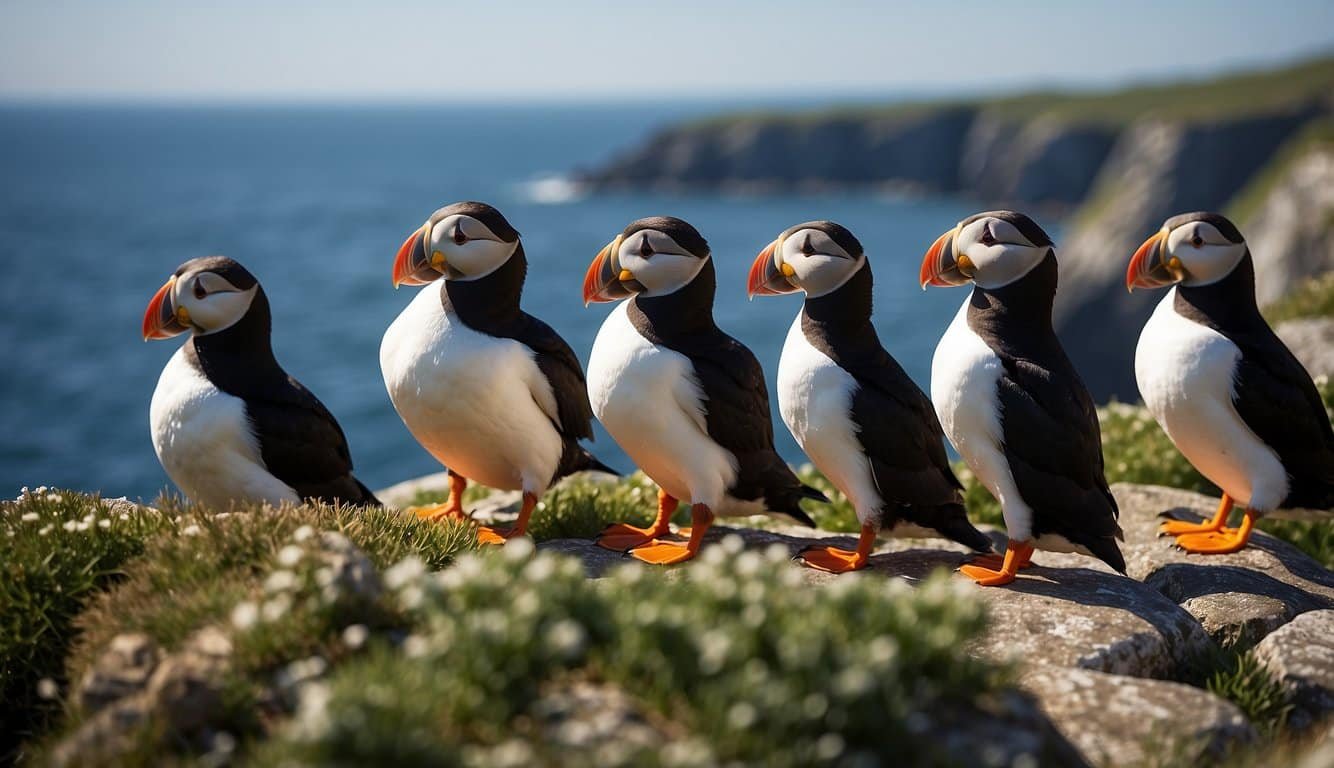Puffin Overview

Puffins are distinctive seabirds known for their colorful beaks and adept swimming abilities. They belong to the genus Fratercula, placing them squarely within the alcidae, or auk, family. These “clowns of the sea” are not only remarkable for their vividly hued beaks during the breeding season but also for their agility both in air and underwater.
Species and Taxonomy
The family alcidae encompasses three main species of puffins: the Atlantic Puffin (Fratercula arctica), Horned Puffin (F. corniculata), and Tufted Puffin (F. cirrhata). All three species nest colonially on coastlines and islands, often forming large, raucous breeding colonies. Taxonomically, these birds fall under the order Charadriiformes, class Aves, phylum Chordata, and kingdom Animalia. Puffins were first described by Linnaeus, the father of modern taxonomy, consolidating their scientific prominence.
Physical Characteristics
Puffins are relatively small birds, with typical body sizes ranging from 28 to 34 centimeters (11 to 13 inches) and a wingspan reaching up to 63 centimeters (25 inches). They are characterized by their stout bodies and short wings that make them excellent swimmers. Their legs are set far back on the body, aiding in their diving prowess — puffins can dive up to 60 meters (200 feet) to catch fish. During dives, puffins utilize their wings to ‘fly’ underwater, with their webbed feet acting as rudders.
One of the puffin’s most notable features is its beak. While it appears predominantly black throughout much of the year, it brightens into a mix of orange, yellow, and grey hues during the breeding season. The transformation of their beak color is among the most striking of seabirds and contributes to their nickname “sea parrot.” Although often perceived as purely aesthetic, the vibrant beak plays an important role in courtship and social bonding.
Puffins feed primarily on small fish, which they catch by diving beneath the surface. Their diet is a crucial aspect of their ecology and greatly influences their survival and reproductive success. Studies have shown how changes in prey availability can significantly impact puffin populations, emphasizing the link between these birds and the marine ecosystems they inhabit. For a more detailed look at a puffin’s life and threats to their survival, readers can refer to a population evaluation of puffins.
When it comes to understanding puffins’ genetic structure and population dynamics, research advances in seabird genomics have been pivotal. These studies not only offer insights into puffin’s past and present structure but also guide future conservation efforts.
Habitat and Distribution

Puffins are remarkable seabirds known for their iconic colorful beaks and their ability to thrive in various marine environments. These seabirds have special adaptations that allow them to excel in coastal areas where they can find ample fish—their primary food source.
Breeding Habitats
Atlantic Puffins are known to make their homes in burrow-lined colonies along coastal cliffs and offshore islands. They exhibit a fascinating behavior of digging burrows using their strong feet or nesting in crevices among rocks. The vegetation in their habitat often includes grass and other greens, which provide cover and stability for their nesting sites. During the breeding season, these areas become bustling communities, teeming with activity as puffins return to their same burrows year after year.
Geographical Range
The geographical range of the Atlantic Puffin is mainly within the boundaries of the cold waters of the North Atlantic. They are found from the coasts of Maine and Canada, stretching across the Atlantic to include Iceland, Norway, the Faroe Islands, and as far south as France. Throughout these regions, colonies make their presence known with the characteristic sights and sounds of puffins bustling about. A lesser-known cousin, the Rhinoceros Auklet, occupies Pacific habitats, from California all the way to Russia. Renowned colonies, such as those in Greenland, Scotland, including Skomer, and in Newfoundland and Labrador, showcase the puffin’s ability to adapt and thrive in diverse coastal ecosystems across the globe.
Puffin Behavior and Ecology
Puffins, with their colorful beaks and whimsical flight patterns, captivate the imagination of many bird enthusiasts. They are members of the auk family, primarily inhabiting the chilly waters of the North Atlantic Ocean. These birds are known for their remarkable diving ability and their unique breeding habits.
Feeding and Diet
Puffins are proficient hunters, spending a significant amount of time at sea targeting small fish such as sand eels and herring. They use their specialized bills to catch multiple fish during a single dive. Observations have shown that their foraging behavior is mostly diurnal. Unlike other seabirds, their dive is typically V-shaped, allowing them to reach prey in shallower waters.
Breeding and Reproduction
The breeding season for puffins is a window into their more social side. They form breeding colonies on coastal cliffs and offshore islands, with locations ranging from Labrador to the coasts of the Canadian province. During courtship, puffins are known for their elaborate displays, which include rubbing their bills together. They nest in burrows, often lined with feathers and other soft materials, where a single egg is laid. Both parents share the duties of incubating the egg and raising the chick.
Threats and Conservation
As endearing as they are, puffins face several challenges. They are considered vulnerable due to threats that include overfishing, which depletes their food sources, and predation by gulls and other birds. Changes in sea temperature can also affect the availability of their prey, making it harder for them to feed their nestlings. Conservation efforts are focused on safeguarding their habitats and ensuring sustainable practices are in place to maintain the fish populations that puffins rely on for food.

